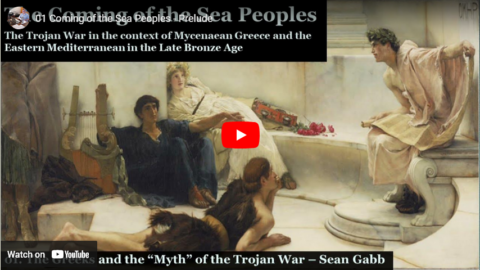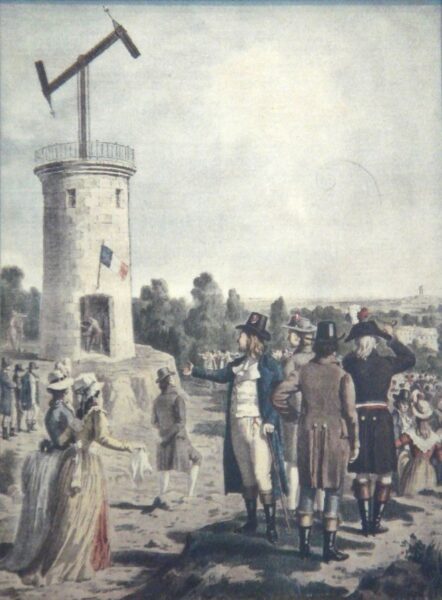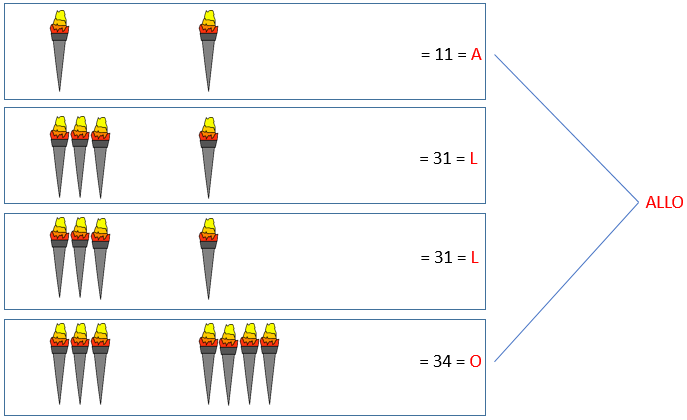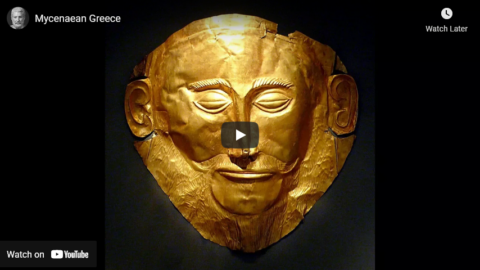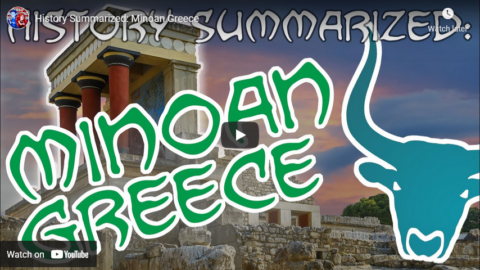In most ways […] we can treat rent and taxes together because their economic impacts are actually pretty similar: they force the farmer to farm more in order to supply some of his production to people who are not the farming household.
There are two major ways this can work: in kind and in coin and they have rather different implications. The oldest – and in pre-modern societies, by far the most common – form of rent/tax extraction is extraction in kind, where the farmer pays their rents and taxes with agricultural products directly. Since grain (threshed and winnowed) is a compact, relatively transportable commodity (that is, one sack of grain is as good as the next, in theory), it is ideal for these sorts of transactions, although perusing medieval manorial contacts shows a bewildering array of payments in all sorts of agricultural goods. In some cases, payment in kind might also come in the form of labor, typically called corvée labor, either on public works or even just farming on lands owned by the state.
The advantage of extraction in kind is that it is simple and the initial overhead is low. The state or large landholders can use the agricultural goods they bring in in rents and taxes to directly sustain specialists: soldiers, craftsmen, servants, and so on. Of course the problem is that this system makes the state (or the large landholder) responsible for moving, storing and cataloging all of those agricultural goods. We get some sense of how much of a burden this can be from the prominence of what seem to be records of these sorts of transactions in the surviving writing from the Bronze Age Near East (although I should note that many archaeologists working on the ancient Near Eastern economy are pushing for a somewhat larger, if not very large, space for market interactions outside of the “temple economy” model which has dominated the field for quite some time). This creates a “catch” we’ll get back to: taxation in kind is easy to set up and easier to maintain when infrastructure and administration is poor, but in the long term it involves heavier administrative burdens and makes it harder to move tax revenues over long distances.
Taxation in coin offers potentially greater efficiency, but requires more particular conditions to set up and maintain. First, of course, you have to have coinage. That is not a given! Much of the social interactions and mechanics of farming I’ve presented here stayed fairly constant (but consult your local primary sources for variations!) from the beginnings of written historical records (c. 3,400 BC in Mesopotamia; varies place to place) down to at least the second agricultural revolution (c. 1700 AD in Europe; later elsewhere) if not the industrial revolution (c. 1800 AD). But money (here meaning coinage) only appears in Anatolia in the seventh century BC (and probably independently invented in China in the fourth century BC). Prior to that, we see that big transactions, like long-distance trade in luxuries, might be done with standard weights of bullion, but that was hardly practical for a farmer to be paying their taxes in.
Coinage actually takes even longer to really influence these systems. The first place coinage gets used is where bullion was used – as exchange for big long-distance trade transactions. Indeed, coinage seemed to have started essentially as pre-measured bullion – “here is a hunk of silver, stamped by the king to affirm that it is exactly one shekel of weight”. Which is why, by the by, so many “money words” (pounds, talents, shekels, drachmae, etc.) are actually units of weight. But if you want to collect taxes in money, you need the small farmers to have money. Which means you need markets for them to sell their grain for money and then those merchants need to be able to sell that grain themselves for money, which means you need urban bread-eaters who are buying bread with money, which means those urban workers need to be paid in money. And you can only get any of these people to use money if they can exchange that money for things they want, which creates a nasty first-mover problem.
We refer to that entire process as monetization – when I talk about economies being “monetized” or “incompletely monetized” that’s what I mean: how completely has the use of money penetrated through this society. It isn’t a one-way street, either. Early and High Imperial Rome seem to have been more completely monetized than the Late Roman Western Empire or the early Middle Ages (though monetization increases rapidly in the later Middle Ages).
Extraction, paradoxically, can solve the first mover problem in monetization, by making the state the first mover. If the state insists on raising taxes in money, it forces the farmers to sell their grain for money to pay the tax-man; the state can then take that money and use it to pay soldiers (almost always the largest budget-item in an ancient or medieval state budget), who then use the money to buy the grain the farmers sold to the merchants, creating that self-sustaining feedback loop which steadily monetizes the society. For instance, Alexander the Great’s armies – who expected to be paid in coin – seem to have played a major role in monetizing many of the areas they marched through (along with breaking things and killing people; the image of Alexander the Great’s conquests in popular imagination tend to be a lot more sanitized).
Bret Devereaux, “Collections: Bread, How Did They Make It? Part IV: Markets, Merchants and the Tax Man”, A Collection of Unmitigated Pedantry, 2020-08-21.
September 8, 2023
QotD: Rents and taxes in pre-modern societies
May 19, 2023
QotD: The horses of the Eurasian Steppe
The horse is native to the Eurasian Steppe – that is where it evolved and was first domesticated, though the earliest domesticated wild horses were much smaller and weaker (but more robust and self-sufficient) than modern horses. The horse was first domesticated here, on the Eurasian Steppe, by the nomadic peoples there around 3,700 BCE. It seems likely that the nomads of the steppe were riding these horses more or less from the get-go (based on bridle and bit wear patterns on horse bones), but the domesticated horse first shows up in the settled Near East as chariotry (rather than cavalry) around 2000 BCE; true cavalry won’t become prominent in the agrarian world until after the Late Bronze Age Collapse (c. 1200 BCE).
I wanted to start by stressing these dates just to note that the peoples of the Eurasian Steppe had a long time to adapt themselves to a nomadic lifestyle structured around horses and pastoralism, which, as we’ve seen, was not the case for the peoples of the Americas, whose development of a sustainable system of horse nomadism was violently disrupted.
That said, the steppe horse (perhaps more correctly, the steppe pony) is not quite the same as modern domesticated horses. The sorts of horses that occupy stables in Europe or America are the product of centuries of selective breeding for larger and stronger horses. Because those horses were stable fed (that is, fed grains and hay, in addition to grass), they could be bred much larger what a horse fed entirely on grass could support (with the irony that many of those breeds of horses, if released into the wild in their native steppe, would be unable to subsist themselves), because processed grains have much higher nutrition and calorie density than grass. So while most modern horses range between c. 145-180cm tall, the horses of the steppe were substantially smaller, 122-142cm. Again, just to be clear, this is essential because the big chargers and work-horses of the agrarian world cannot sustain themselves purely on grass and the Steppe nomad needs a horse which can feed itself (while we’re on horse-size, mustangs, the feral horses of the Americas, generally occupy the low-end of the horse range as well, typically 142-152cm in height – even when it is clear that their domesticated ancestors were breeds of much larger work horses).
Bret Devereaux, “That Dothraki Horde, Part II: Subsistence on the Hoof”, A Collection of Unmitigated Pedantry, 2020-12-11.
April 4, 2023
History Summarized: the Ancient Greek Post-Apocalypse
Overly Sarcastic Productions
Published 31 Mar 2023Turns out the “Studio Ghibli Post-Apocalypse” aesthetic has a historical basis in ancient Greek history’s Bronze Age Collapse, long Dark Age, and slow re-emergence into the Polis Age. I don’t know if I’d call the process pleasant, but it sure as hell is a vibe.
GO READ THE ILIAD: https://bookshop.org/p/books/the-ilia… — We enjoy the Fagles translation, as it’s the typical classroom and library standard, but if you want a real treat, try the Alexander Pope edition from the 1700s that’s written entirely in RHYME. THE DAMN THING RHYMES!!!
SOURCES & Further Reading:
“The Age of Heroes” and “Delphi and Olympia” from Ancient Greek Civilization by Jeremy McInerney – “Dark Age and Archaic Greece” from The Foundations of Western Civilization by Thomas F. X. Noble – “Dark Age and Archaic Greece” from The Greek World: A Study of History and Culture by Robert Garland “The Greeks: A Global History” by Roderick Beaton, “The Greeks: An Illustrated History” by Diane Cline, Metropolitan Museum “Geometric Art in Ancient Greece” https://www.metmuseum.org/toah/hd/grg… also have a degree in Classical Studies
(more…)
March 9, 2023
QotD: Iron ore mining before the Industrial Revolution
Finding ore in the pre-modern period was generally a matter of visual prospecting, looking for ore outcrops or looking for bits of ore in stream-beds where the stream could then be followed back to the primary mineral vein. It’s also clear that superstition and divination often played a role; as late as 1556, Georgius Agricola feels the need to include dowsing in his description of ore prospecting techniques, though he has the good sense to reject it.
As with many ancient technologies, there is a triumph of practice over understanding in all of this; the workers have mastered the how but not the why. Lacking an understanding of geology, for instance, meant that pre-modern miners, if the ore vein hit a fault line (which might displace the vein, making it impossible to follow directly) had to resort to sinking shafts and exploratory mining an an effort to “find” it again. In many cases ancient miners seem to have simply abandoned the works when the vein had moved only a short distance because they couldn’t manage to find it again. Likewise, there was a common belief (e.g. Plin. 34.49) that ore deposits, if just left alone for a period of years (often thirty) would replenish themselves, a belief that continues to appear in works on mining as late as the 18th century (and lest anyone be confused, they clearly believe this about underground deposits; they don’t mean bog iron). And so like many pre-modern industries, this was often a matter of knowing how without knowing why.
Once the ore was located, mining tended to follow the ore, assuming whatever shape the ore-formation was in. For ore deposits in veins, that typically means diggings shafts and galleries (or trenches, if the deposit was shallow) that follow the often irregular, curving patterns of the veins themselves. For “bedded” ore (where the ore isn’t in a vein, but instead an entire layer, typically created by erosion and sedimentation), this might mean “bell pitting” where a shaft was dug down to the ore layer, which was then extracted out in a cylinder until the roof became unstable, at which point the works were back-filled or collapsed and the process begun again nearby.
All of this digging had to be done by hand, of course. Iron-age mining tools (picks, chisels, hammers) fairly strongly resemble their modern counterparts and work the same way (interestingly, in contrast to things like bronze-age picks which were bronze sheaths around a wooden core, instead of a metal pick on a wooden haft).
For rock that was too tough for simple muscle-power and iron tools to remove, the typical expedient was “fire-setting“, which remained a standard technique for removing tough rocks until the introduction of explosives in the modern period. Fire-setting involves constructing a fuel-pile (typically wood) up against the exposed rock and then letting it burn (typically overnight); the heat splinters, cracks and softens the rock. The problem of course is that the fire is going to consume all of the oxygen and let out a ton of smoke, preventing work close to an active fire (or even in the mine at all while it was happening). Note that this is all about the cracking and splintering effect, along with chemical changes from roasting, not melting the rock – by the time the air-quality had improved to the point where the fire-set rock could be worked, it would be quite cool. Ancient sources regularly recommend dousing these fires with vinegar, not water, and there seems to be some evidence that this would, in fact, render the rock easier to extract afterwards.
By the beginning of the iron age in Europe (which varies by place, but tends to start between c. 1000 and c. 600 BC), the level of mining sophistication that we see in preserved mines is actually quite considerable. While Bronze Age mines tend to stay above the water-table, iron-age mines often run much deeper, which raises all sorts of exciting engineering problems in ventilation and drainage. Deep mines could be drained using simple bucket-lines, but we also see more sophisticated methods of drainage, from the Roman use of screw-pumps and water-wheels to Chinese use of chain-pumps from at least the Song Dynasty. Ventilation was also crucial to prevent the air becoming foul; ventilation shafts were often dug, with the use of either cloth fans or lit fires at the exits to force circulation. So mining could get very sophisticated when there was a reason to delve deep. Water might also be used to aid in mining, by leading water over a deposit and into a sluice box where the minerals were then separated out. This seems to have been done mostly for mining gold and tin.
Bret Devereaux, “Iron, How Did They Make It? Part I, Mining”, A Collection of Unmitigated Pedantry, 2020-09-18.
December 31, 2022
Coming of the Sea Peoples: Part 6 – Crete and the Minoans
seangabb
Published 6 Jul 2021The Late Bronze Age is a story of collapse. From New Kingdom Egypt to Hittite Anatolia, from the Assyrian Empire to Babylonia and Mycenaean Greece, the coming of the Sea Peoples is a terror that threatens the end of all things. Between April and July 2021, Sean Gabb explored this collapse with his students. Here is one of his lectures. All student contributions have been removed.
(more…)
December 27, 2022
Coming of the Sea Peoples: Part 5 – The Hittites
seangabb
Published 6 Jul 2021[Unfortunately, parts 3 and 4 of this lecture series were not uploaded due to sound issues with the recording].
The Late Bronze Age is a story of collapse. From New Kingdom Egypt to Hittite Anatolia, from the Assyrian Empire to Babylonia and Mycenaean Greece, the coming of the Sea Peoples is a terror that threatens the end of all things. Between April and July 2021, Sean Gabb explored this collapse with his students. Here is one of his lectures. All student contributions have been removed.
(more…)
December 20, 2022
Coming of the Sea Peoples: Part 2 – The Old and New Chronology of the Bronze Age
seangabb
Published 2 May 2021The Late Bronze Age is a story of collapse. From New Kingdom Egypt to Hittite Anatolia, from the Assyrian Empire to Babylonia and Mycenaean Greece, the coming of the Sea Peoples is a terror that threatens the end of all things. Between April and July 2021, Sean Gabb explored this collapse with his students. Here is one of his lectures. All student contributions have been removed.
(more…)
December 16, 2022
Coming of the Sea Peoples: Part 1 – Prelude
seangabb
Published 1 May 2021The Late Bronze Age is a story of collapse. From New Kingdom Egypt to Hittite Anatolia, from the Assyrian Empire to Babylonia and Mycenaean Greece, the coming of the Sea Peoples is a terror that threatens the end of all things. Between April and July 2021, Sean Gabb explored this collapse with his students. Here is one of his lectures. All student contributions have been removed.
More by Sean Gabb on the Ancient World: https://www.classicstuition.co.uk/
Learn Latin or Greek or both with him: https://www.udemy.com/user/sean-gabb/
His historical novels (under the pen name “Richard Blake”): https://www.amazon.co.uk/Richard-Blak…
November 12, 2022
Long distance communication in the pre-modern era
In the latest Age of Invention newsletter, Anton Howes considers why the telegraph took so long to be invented and describes some of the precursors that filled that niche over the centuries:
… I’ve also long wondered the same about telegraphs — not the electric ones, but all the other long-distance signalling systems that used mechanical arms, waved flags, and flashed lights, which suddenly only began to really take off in the eighteenth century, and especially in the 1790s.
What makes the non-electric telegraph all the more interesting is that in its most basic forms it actually was used all over the world since ancient times. Yet the more sophisticated versions kept on being invented and then forgotten. It’s an interesting case because it shows just how many of the budding systems of the 1790s really were long behind their time — many had actually already been invented before.
The oldest and most widely-used telegraph system for transmitting over very long distances was akin to Gondor’s lighting of the beacons, capable only of communicating a single, pre-agreed message (with flames often more visible at night, and smoke during the day). Such chains of beacons were known to the Mari kingdom of modern-day Syria in the eighteenth century BC, and to the Neo-Assyrian emperor Ashurbanipal in the seventh century BC. They feature in the Old Testament and the works of Herodotus, Aeschylus, and Thucydides, with archaeological finds hinting at even more. They remained popular well beyond the middle ages, for example being used in England in 1588 to warn of the arrival of the Spanish Armada. And they were seemingly invented independently all over the world. Throughout the sixteenth century, Spanish conquistadors again and again reported simple smoke signals being used by the peoples they invaded throughout the Americas.
But what we’re really interested in here are systems that could transmit more complex messages, some of which may have already been in use by as early as the fifth century BC. During the Peloponnesian War, a garrison at Plataea apparently managed to confuse the torch signals of the attacking Thebans by waving torches of their own — strongly suggesting that the Thebans were doing more than just sending single pre-agreed messages.
About a century later, Aeneas Tacticus also wrote of how ordinary fire signals could be augmented by using identical water clocks — essentially just pots with taps at the bottom — which would lose their water at the same rate and would have different messages assigned to different water levels. By waving torches to signal when to start and stop the water clocks (Ready? Yes. Now start … stop!), the communicator could choose from a variety of messages rather than being limited to one. A very similar system was reportedly used by the Carthaginians during their conquests of Sicily, to send messages all the way back to North Africa requesting different kinds of supplies and reinforcement, choosing from a range of predetermined signals like “transports”, “warships”, “money”.
Diagram of a fire signal using the Polybius cipher.
Created by Jonathan Martineau via Wikimedia Commons.By the second century BC, a new method had appeared. We only know about it via Polybius, who claimed to have improved on an even older method that he attributed to a Cleoxenus and a Democleitus. The system that Polybius described allowed for the spelling out of more specific, detailed messages. It used ten torches, with five on the left and five on the right. The number of torches raised on the left indicated which row to consult on a pre-agreed tablet of letters, while the number of torches raised on the right indicated the column. The method used a lot of torches, which would have to be quite spread out to remain distinct over very long distances. So it must have been quite labour-intensive. But, crucially, it allowed for messages to be spelled out letter by letter, and quickly.
Three centuries later, the Romans were seemingly still using a much faster and simpler version of Polybius’s system, almost verging on a Morse-like code. The signalling area now had a left, right, and middle. But instead of signalling a letter by showing a certain number of torches in each field all at once, the senders waved the torches a certain number of times — up to eight times in each field, thereby dividing the alphabet into three chunks. One wave on the left thus signalled an A, twice on the left a B, once in the middle an I, twice in the middle a K, and so on.
By the height of the Roman Empire, fire signals had thus been adapted to rapidly transmit complex messages over long distances. But in the centuries that followed, these more sophisticated techniques seem to have disappeared. The technology appears to have regressed.
October 28, 2022
History Summarized: Mycenaean Greece & the Bronze Age Collapse
Overly Sarcastic Productions
Published 24 Jun 2022I’m pronouncing Mycenaean & Mycenae with a hard “K” sound because that’s how it sounds in Greek, and I would not be so impolite as to mispronounce the name of the first Greek-speaking civilization in history. (The name of “Mycenae” can be spelled Μυκῆναι or Μυκήνη, and I’m using the first one: mee-KEE-neh)
(more…)
September 29, 2022
The History of Cyprus Explained in 10 minutes
Epimetheus
Published 24 May 2022The history of Cyprus explained from ancient times to modern.
(more…)
September 11, 2022
Are we looking at a modern equivalent to the Bronze Age Collapse?
If you’re feeling happy and optimistic, Theophilus Chilton has a bucket of cold water to douse you with:
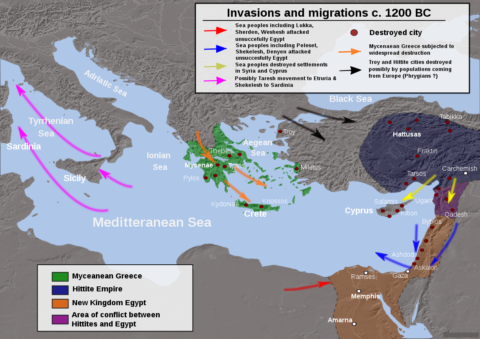
Migrations, invasions and destructions during the end of the Bronze Age (c. 1200 BC), based on public domain information from DEMIS Mapserver.
Map by Alexikoua via Wikimedia Commons.
Regular readers know that I’ve talked about collapse (as well as the implied regeneration that follows it) on here a lot. In nearly all cases, though, I’ve discussed it within a specifically American context – the collapse of the present American system and the potential for one or more post-American successor states arising in place of the present globohomo order. However, we should recognise that collapse is a general phenomenon that affects any and all large nations eventually. Just as America is not a special snowflake who is exempt from the laws of demographic-structural theory, so also is she not the only one subject to them.
Further in this vein, we should recognise that no major nation is isolated from its neighbours. No matter how self-sufficient, sooner or later everybody gets hooked up into trade networks. As trade networks expand, you develop world systems that display increased international interconnectedness and interdependency. From a demographic-structural perspective, the interconnectedness of these global systems acts to “synch up” the secular cycles of the nations involved as “information flows” increase. The upside to this is that when one part of the system prospers, everyone does. The downside, of course, is that when one part collapses, everyone does as well.
There are several historical examples of this kind of interconnected system synching up and then collapsing. Probably one of the most well-known examples would be the Bronze Age collapse which occurred in the Mediterranean world system roughly between 1225-1150 BC. Likely due to several shocks to the system working in tandem (drought, volcanic eruptions, migrations into the Balkans from the north, etc.), a series of invasions of the Sea Peoples spread out across the entire eastern end of the Mediterranean, toppling Mycenaean Greece and the Hittite Empire, and nearly did the same to Egypt. From there, the shocks moved outward throughout the rest of Anatolia and Syro-Palestine and eastward into Mesopotamia, disrupting the entire interconnected trade network. The system was apparently already primed to be toppled by these jolts, however, due to the top-heavy political structures (elite overproduction) and overspecialisation in these empires that contributed to their fragility in the face of system shocks. When the first one fell, the effects spread out like dominoes falling in a row.
There is evidence that this collapse extended beyond the Mediterranean basin and disrupted the civilisation existing in the Nordic Bronze Age around the Baltic Sea. Right around the same time that Bronze Age Mediterranean society was collapsing, serious changes to society in the Baltic basin were also taking place, primarily due to the disruption of trade routes that connected the two regions, with amber flowing south and metals and prestige goods returning north. During this period, the population in the area transitioned from a society organised primarily around scattered villages and farms into one that became more heavily militarised and centred around fortified towns, indicating that there was a change in the region’s elite organisation, or at least a strong modification of it (remember that collapse phases are characterised by struggles between competing elite groups). A large battle that dates to this era has been archaeologically uncovered in the Tollense Valley of northeastern Germany which is thought to have involved over 5000 combatants — a huge number for this area at this time, indicating more centralised state-like organisational capacities than were previously thought to have existed in the region. All in all, the evidence seems to suggest that this culture underwent some type of collapse phase at this time, likely in tandem with that occurring further south.
Other times and places have also seen such world system collapses take place. for instance, when the western Roman Empire was falling in the 3rd-5th centuries AD, the entire Mediterranean basis (again) underwent a systemwide socioeconomic collapse and decentralisation. More recently, the entire Eurasian trade system, from England to China, underwent a synchronised collapse phase in the early 17th century AD that saw revolutions, elite conflict, decentralisation, and social simplification take place across the length of the continent.
The great irony of interconnectedness is that too much of it actually works to reduce resilience within a system. Because an intensively globalised world system entails a lot of specialisation as different parts begin to focus on the production of different commodities needed within the network, this makes each part of the system more dependent upon the others. This works to reduce the resiliency of each of these individual parts, and the greater interconnectedness allows failure in one part to be communicated more widely and rapidly to other parts than might otherwise be the case in less interconnected systems.
June 23, 2022
1177 B.C.: When Civilization Collapsed | Eric Cline
Long Now Foundation
Published 19 Apr 2020Consider this, optimists. All the societies in the world can collapse simultaneously. It has happened before.
In the 12th century BCE the great Bronze Age civilizations of the Mediterranean — all of them — suddenly fell apart. Their empires evaporated, their cities emptied out, their technologies disappeared, and famine ruled. Mycenae, Minos, Assyria, Hittites, Canaan, Cyprus — all gone. Even Egypt fell into a steep decline. The Bronze Age was over.
The event should live in history as one of the great cautionary tales, but it hasn’t because its causes were considered a mystery. How can we know what to be cautious of? Eric Cline has taken on on the mystery. An archaeologist-historian at George Washington University, he is the author of 1177 B.C.: The Year Civilization Collapsed. The failure, he suggests, was systemic. The highly complex, richly interconnected system of the world tipped all at once into chaos.
“1177 B.C.: When Civilization Collapsed” was given on January 11, 2016 as part of Long Now’s Seminar series. The series was started in 2003 to build a compelling body of ideas about long-term thinking from some of the world’s leading thinkers. The Seminars take place in San Francisco and are curated and hosted by Stewart Brand. To follow the talks, you can:
Subscribe to our podcasts: http://longnow.org/seminars/podcast
Explore the full series: http://longnow.org/seminars
More ideas on long-term thinking: http://blog.longnow.orgThe Long Now Foundation is a non-profit dedicated to fostering long-term thinking and responsibility. Our projects include a 10,000 Year Clock, endangered language preservation, thousand year+ data storage, and Long Bets, an arena for accountable predictions.
Become a Long Now member to support this series, join our community, and connect with our ongoing work to explore and deepen long-term thinking: http://longnow.org/membership
Follow us on Twitter: https://www.twitter.com/longnow
Subscribe to our channel: https://www.youtube.com/longnow
March 1, 2022
Mycenaean Greece
Thersites the Historian
Published 25 Jan 2018In this video, I look at the Mycenaean civilization in Greece, which lasted from 1600-1100 BCE.
December 18, 2021
History Summarized: Minoan Greece
Overly Sarcastic Productions
Published 17 Dec 2021The classical Greeks weren’t the first kids on the Aegean block. Long before Athens’ golden age, before Homer, and even before the Trojan War, there was a civilization on the island of Krete. The land of King Minos was home to beautiful palaces, a fascinatingly-complex economy, and something approximating Bull-Cthulu. It’s a fun time, let’s jump in.
SOURCES & Further Reading: The Greeks: An Illustrated History by Diane Cline for National Geographic, The Greeks: A Global History by Roderick Beaton, Lectures from The Great Courses Plus — “Being Minoan and Mycenaean” from The Other Side of History: Daily Life in the Ancient World by Robert Garland, and “Minoan Crete” & “Schliemann & Mycenae” from Ancient Greek Civilization by Jeremy McInerney. And I have a university degree in Classical Studies.
Our content is intended for teenage audiences and up.
PATREON: https://www.Patreon.com/OSP
PODCAST: https://overlysarcasticpodcast.transi…
DISCORD: https://discord.gg/osp
MERCH LINKS: http://rdbl.co/osp
OUR WEBSITE: https://www.OverlySarcasticProductions.com
Find us on Twitter https://www.Twitter.com/OSPYouTube
Find us on Reddit https://www.Reddit.com/r/OSP/

